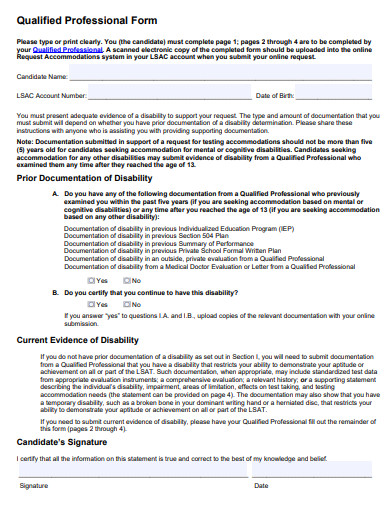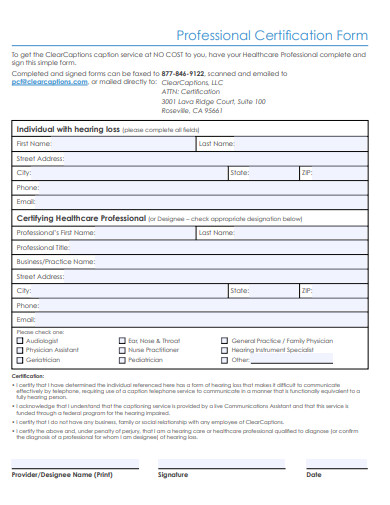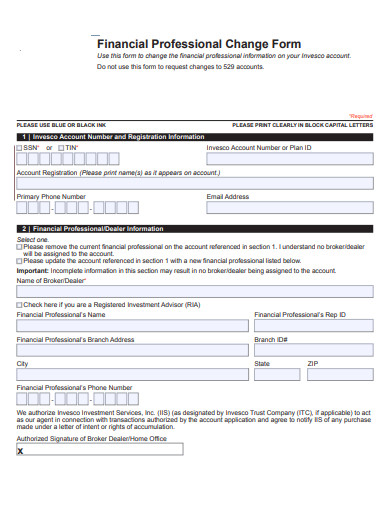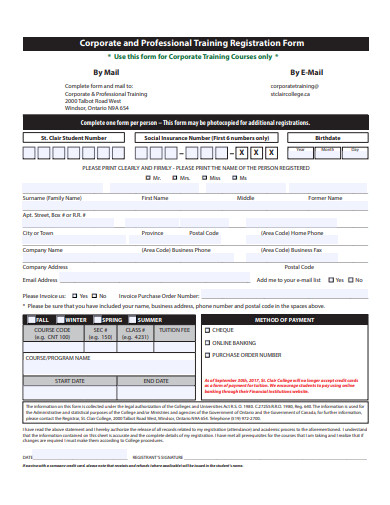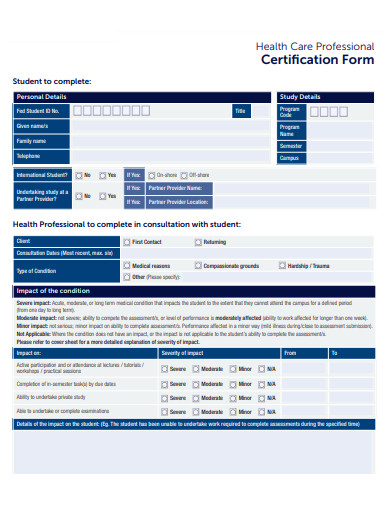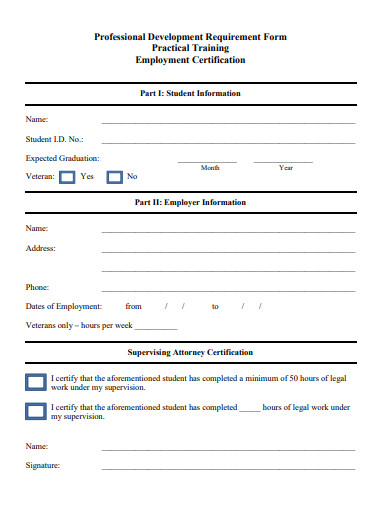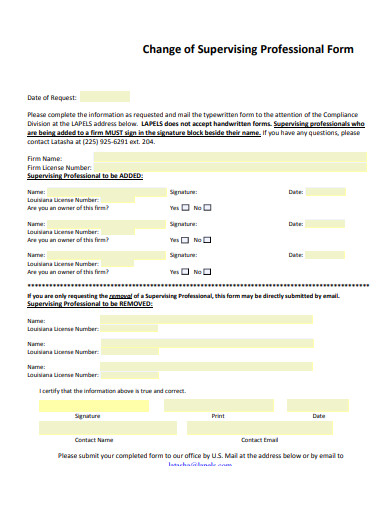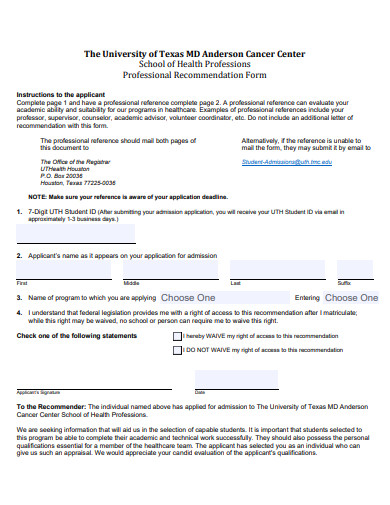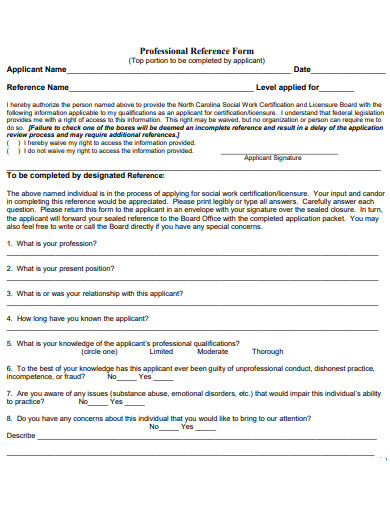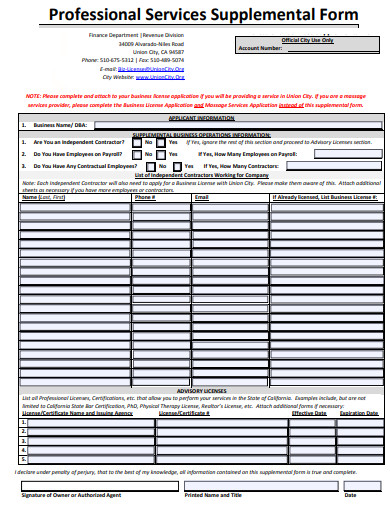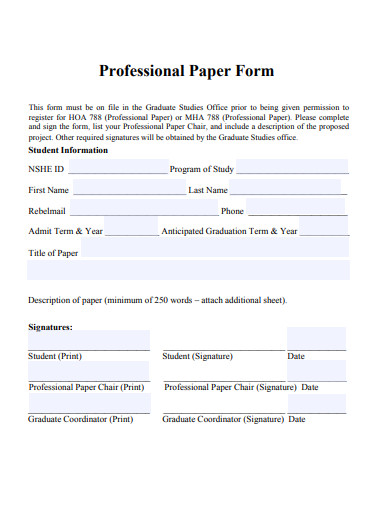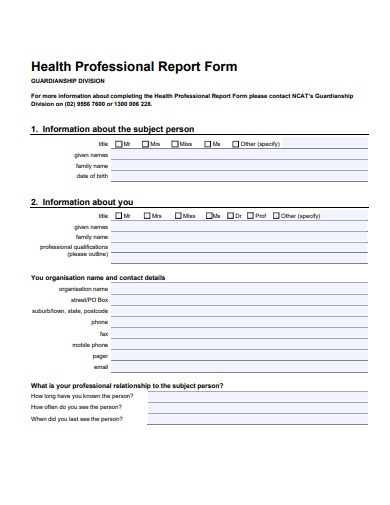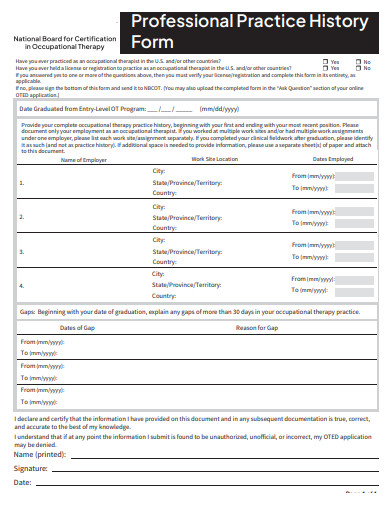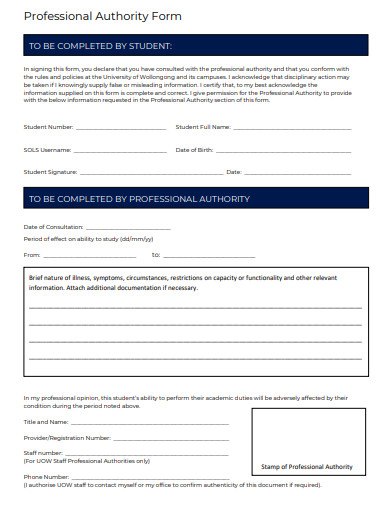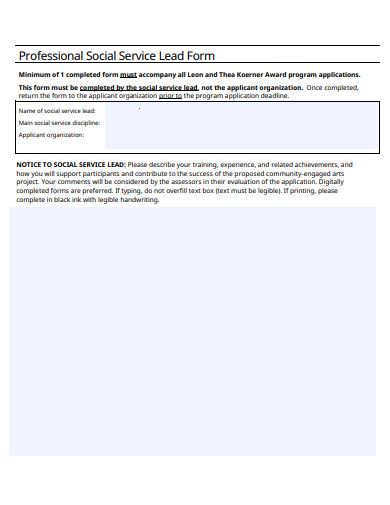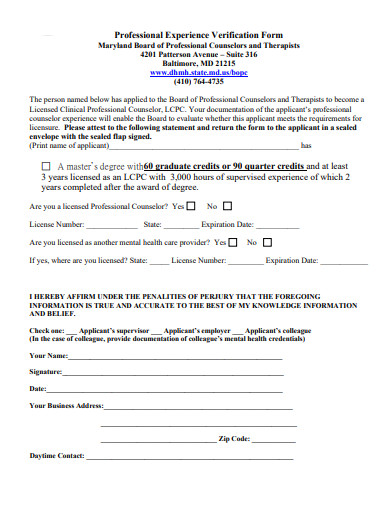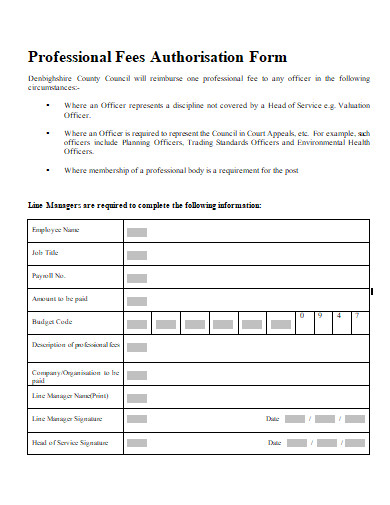In the corporate landscape where precision and clarity reign supreme, the ‘Professional Form’ emerges as an indispensable tool. Tailored to capture nuanced details and streamline processes, it enhances both communication and efficiency. From client interactions to internal operations, a meticulously designed Professional Sample Form plays a pivotal role. Delve into our comprehensive guide to understand its significance, design nuances, and the best practices to make the most of this essential business instrument.
21+ Professional Form Samples
1. Professional Cleaning Business Form Template
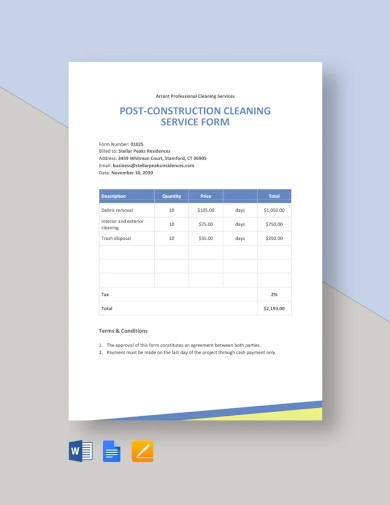
2. Human Resources Professionals Association Complaint Form
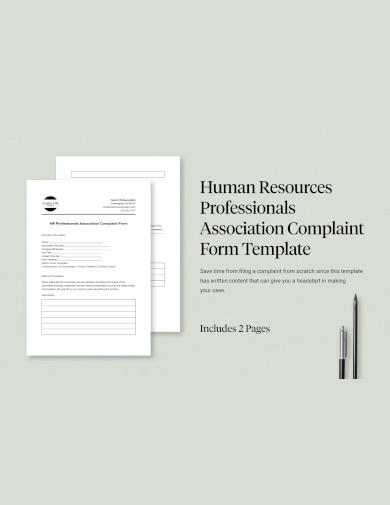
3. Sample Qualified Professional Form Template
4. Sample Professional Certification Form Template
5. Sample Financial Professional Change Form Template
6. Corporate and Professional Training Registration Form Template
What is Professional Form?
The term “Professional Form” can refer to a variety of concepts depending on the context. However, in the broadest sense, it often alludes to the manner in which professionals present themselves, whether through physical appearance, written documents, or behavior in a professional setting. It can also reference standardized design documents or processes used in professional industries.
The Evolution
Historically, every industry has had its standards and codes of behavior, each evolving over time. From the attire of bankers in the 19th century to the digital communication etiquette of today, these forms reflect society’s changing values and advancements.
Importance of Professional Appearance
First Impressions: Often, professionals are judged by their appearance before their capabilities. It’s why dressing appropriately and maintaining a polished appearance is crucial.
Reflecting Organizational Values: One’s attire and demeanor can signify the values and standards of an organization.
Documenting with Professionalism
Standardized Documents: In many industries, there are standardized documents that must be used, like medical forms, legal contracts, or business reports.
Digital Presence: In the modern age, professional form extends to the digital realm. Email communication, LinkedIn profiles, and even tweets can shape one’s professional image.
Behavioral Etiquette in Professional Settings
Meetings and Presentations: From arriving on time to understanding when to speak, behavior during meetings can greatly affect one’s reputation.
Networking: Building relationships is crucial in any industry. Knowing how to approach, converse with, and maintain professional relationships is a key aspect of professional form.
Adapting to Different Cultural Norms
In today’s globalized world, understanding and respecting different cultures’ professional norms is essential. This includes greeting styles, attire preferences, and meeting etiquette.
Training for Professionalism
Many institutions and organizations offer training sessions and workshops on maintaining professional form. These can range from dressing for success to drafting impeccable business emails. You can also see more templates like Registration Forms.
The Future of Professional Form
With the rapid rise of digital communication tools and platforms, the definition of professional form is constantly evolving. Remote work, digital avatars, and virtual meetings might redefine professional etiquette in the coming years.
Why is a Professional Form Necessary?
In a world teeming with competition, rapid advancements, and ever-evolving norms, the necessity of adhering to a professional form stands out as a cornerstone for success in many fields. But what makes it so indispensable? Let’s dive into the myriad reasons why maintaining a professional demeanor and approach is crucial in today’s environment.
Establishing Credibility
At the heart of any professional endeavor lies the quest for credibility. People, be it clients, employers, or colleagues, tend to gravitate towards individuals and organizations they perceive as credible. Professional form – be it in attire, communication, or behavior – signals to others that one is serious, reliable, and worthy of trust.
Facilitating Effective Communication
Professionalism in communication ensures clarity and minimizes misunderstandings. Whether it’s a well-drafted email, a comprehensive report, or an articulate presentation, adhering to professional standards ensures that the intended message is conveyed accurately and effectively.
Garnering Respect
Respect is often reciprocal. By showcasing a professional attitude, individuals often find themselves treated with a higher degree of respect in return. This mutual regard can lead to smoother collaborations, healthier workplace dynamics, and more fruitful partnerships. You can also see more templates like Feedback Forms.
Differentiating from the Competition
In saturated markets, businesses and professionals need every advantage to stand out. A consistent display of professional form can serve as a unique selling point, distinguishing an entity from its competitors and positioning it as a preferred choice for consumers or clients.
Ensuring Consistency
Professional standards, especially in documentation or processes, ensure that there’s a uniform approach to tasks and challenges. This consistency can lead to increased efficiency, predictability, and a streamlined workflow, benefiting both individuals and organizations.
Meeting Regulatory and Ethical Standards
In many fields, adhering to a professional form isn’t just a matter of choice but a requirement. Industries like healthcare, law, and finance have stringent professional and ethical standards that practitioners must abide by to ensure safety, legality, and ethical conduct.
Building and Maintaining Relationships
The professional world thrives on relationships. From networking to client retention, the way one presents themselves can significantly influence the quality and longevity of professional relationships. A professional demeanor serves as a foundation upon which trust and rapport are built.
Adapting to Globalized Interactions
With businesses and collaborations stretching across borders, it’s more important than ever to have a universally recognized standard of professionalism. A consistent professional form ensures that even in diverse settings, there’s a common ground of understanding and expectation.
Who is authorized to sign a Professional Form?
The authorization to sign a “Professional Form” often depends on the context and nature of the form in question. The term “Professional Form” is quite broad, and its meaning can vary across industries and circumstances. Generally, a professional form refers to any document or sample agreement used in a professional or business context. Depending on its purpose, various individuals might be authorized to sign it. Here are some scenarios and the corresponding authorized signatories:
1. Employment Contracts:
Typically, a member of the HR department, a manager, or an executive such as the CEO or Director would be authorized to sign on behalf of the company.
2. Medical Documents:
Medical forms, such as patient consent forms, must be signed by the patient themselves. However, in cases where the patient is unable to sign, a legal guardian or designated medical proxy might be authorized.
3. Legal Agreements:
Depending on the nature of the agreement format, it could be signed by the parties involved, their legal representatives, or an authorized signatory of a corporate entity.
4. Company Financial Documents:
Financial documents, like bank transactions or financial declarations, often require the signature of the company’s Chief Financial Officer (CFO) or another designated financial officer.
5. Business Contracts:
Business contracts are typically signed by the company’s designated representatives, which could be a director, CEO, or any other individual granted the authority to enter the company into legal binding agreements.
6. Educational Documents:
Forms in educational institutions, like admission forms or academic certifications, are generally signed by the dean, principal, or another administrative authority.
7. Regulatory or Compliance Documents:
These forms, which ensure that businesses are operating within established regulations, might be signed by a company’s compliance officer or another designated representative.
8. Professional Certification Forms:
Depending on the industry, sample certification forms might be signed by a representative of the certifying body, board, or association.
7. Sample Health Care Professional Certification Form Template
8. Sample Design Professional Inspection Form Template
9. Professional Development Requirement Form Template
10. Sample Travel Professional Profile Form Template
11. Sample Change of Supervising Professional Form Template
12. Sample Professional Recommendation Form Template
13. Sample Professional Reference Form Template
14. Sample Professional Development Request Form Template
15. Professional Services Supplemental Form Template
16. Sample Professional Paper Form Template
17. Sample Health Professional Report Form Template
18. Sample Professional Practice History Form Template
19. Sample Professional Authority Form Template
20. Sample Professional Social Service Lead Form Template
21. Sample Professional Experience Verification Form Template
22. Sample Professional Fees Authorisation Form Template
How do you Create a Professional Form?
Creating a professional form is essential for any business or individual that wants to gather accurate and useful data. Whether it’s a feedback form, an application, or a sample survey, the clarity and efficiency of the form can significantly influence the responses you receive. Here’s how to create a professional form in five simple steps:
Step 1: Define the Purpose
Before diving into the design and format, it’s crucial to identify the primary purpose of the form. Why are you creating this form? What data are you trying to gather? Having a clear goal ensures that every question you include is purposeful and relevant. For instance, if it’s a job application form, you’ll want to gather the applicant’s personal details, qualifications, and references.
Step 2: Choose the Right Platform
There are numerous tools and platforms available today for creating forms, from Google Forms to specialized software like Typeform or SurveyMonkey. Your choice will largely depend on your needs. Consider factors like ease of use, customization options, integration capabilities, and how the data is stored and accessed. Some platforms also allow for conditional questions, which can make the form more interactive and tailored to the respondent.
Step 3: Design for Clarity and Simplicity
A professional form should be easy to understand and fill out. Keep the design clean and uncluttered. Group related questions together, use consistent fonts and colors, and make sure it’s mobile-friendly since many users might access it from their phones. Be concise in your wording, avoid jargon, and ensure each question is clear and to the point. If a question is optional, mark it as such.
Step 4: Test and Refine
Before releasing your form to the intended audience, conduct a trial run. Share it with colleagues, friends, or a focus group, and gather feedback on their experience. Did they find any questions confusing? Were they unsure about what was being asked at any point? Use this feedback to refine and improve the form. It’s better to identify and fix any issues at this stage rather than after the form has been widely distributed.
Step 5: Ensure Data Privacy and Security
One of the fundamental aspects of any form is the assurance of data privacy and security. If you’re collecting personal information, it’s your responsibility to keep it safe. Make sure to use platforms that prioritize security, and always include a privacy statement on the form, detailing how the data will be used and stored. If necessary, obtain consent from the respondents for storing and using their data.
In Conclusion, Professional form goes beyond just “looking the part.” It’s an integral aspect of personal and organizational success, fostering trust, promoting clear communication, and ensuring that one navigates the complex world of business with grace and integrity. As the business landscape continues to evolve, the foundational principles of professional form remain a constant guiding force for success. You can also see more templates like Appointment Form Samples.
Related Posts
Parent Consent Form Samples & Templates
Sample Release of Liability Forms
Sample Training Feedback Forms
Sample Sworn Affidavit Forms
Agreement Form Samples & Templates
Vehicle Inspection Forms Samples & Templates
Sample Employee Advance Forms
Sample Child Travel Consent Forms
Sample Testimonial Request Forms
Sample Employee Details Forms
Sample Divorce Forms
Sample Attestation Forms
Employee Performance Appraisal Form Templates
FREE 9+ Sample Presentation Evaluation Forms in MS Word
FREE 10+ School Admission Form Samples & Templates in MS Word | PDF

